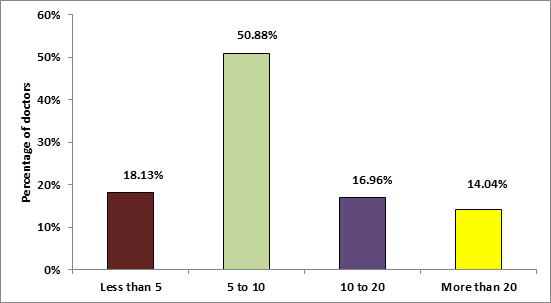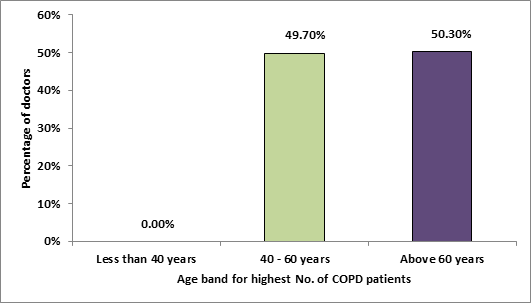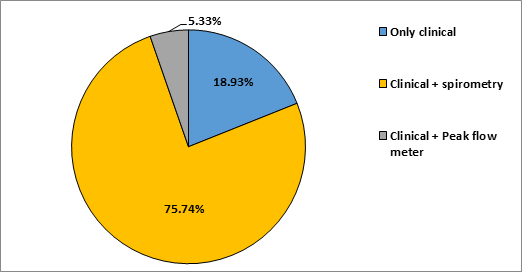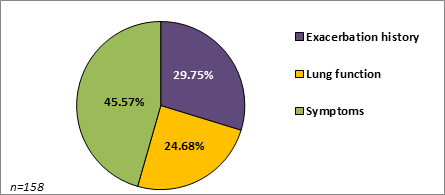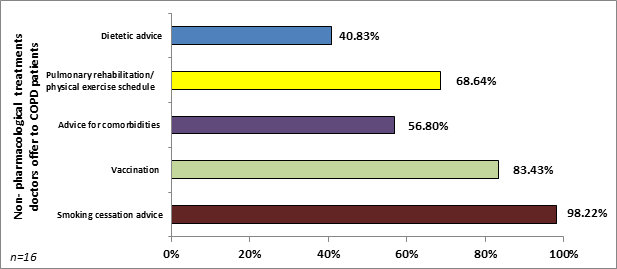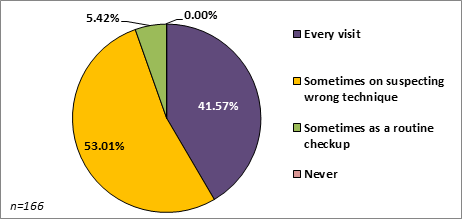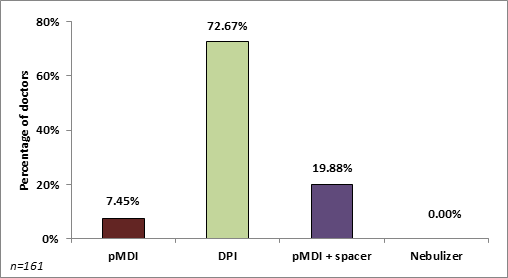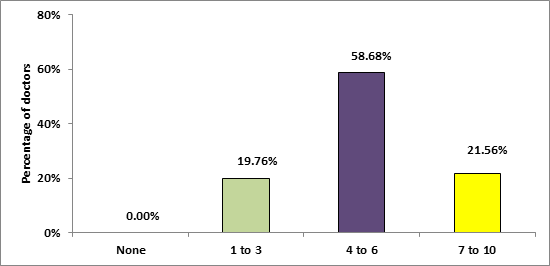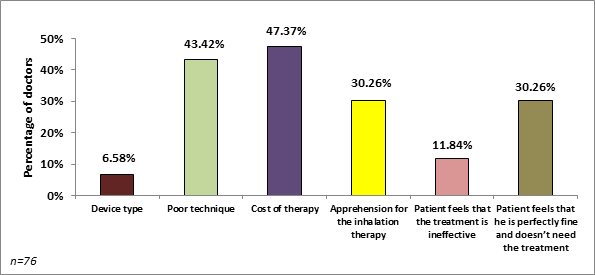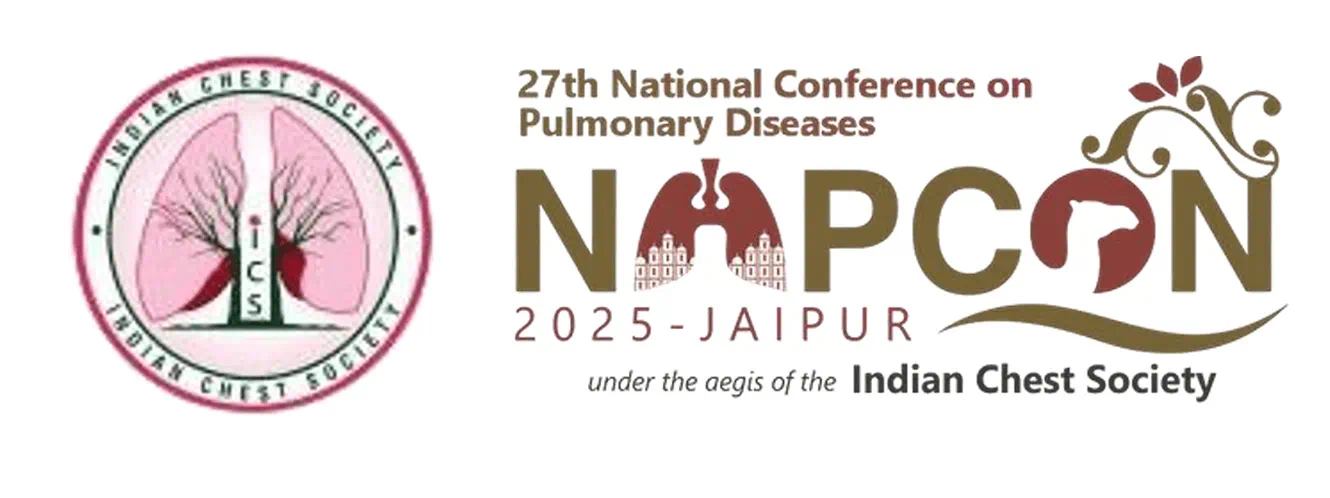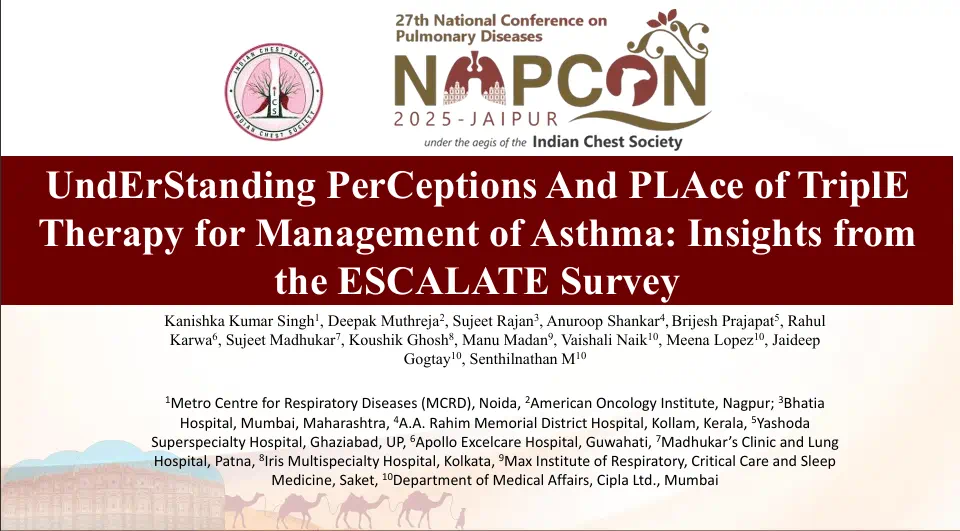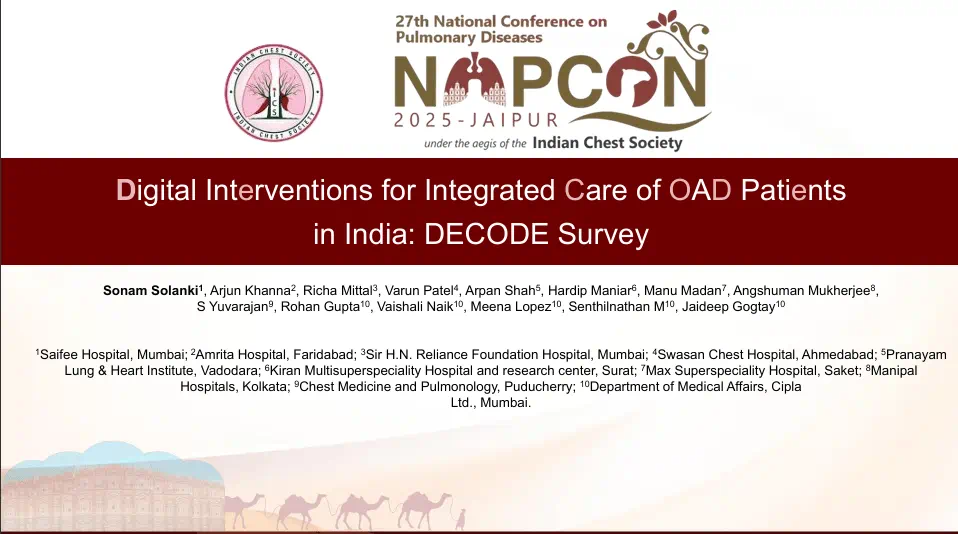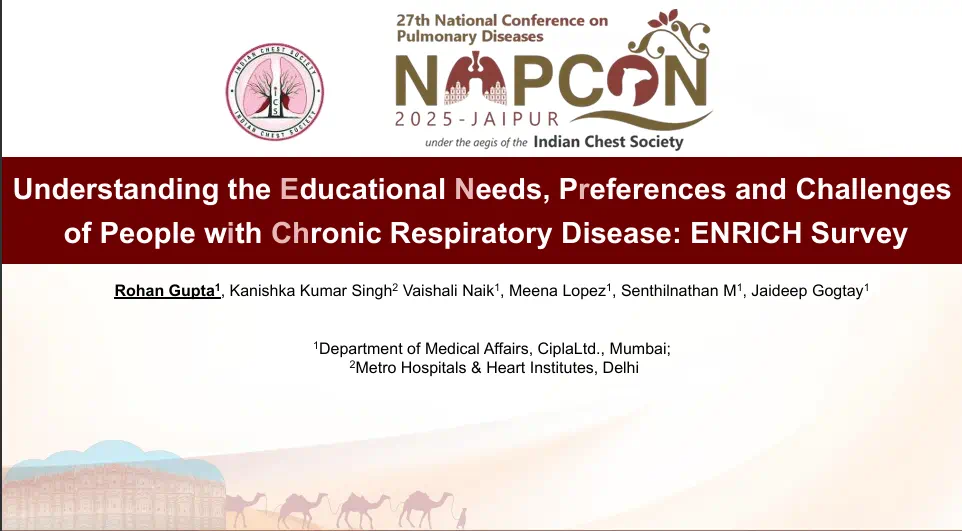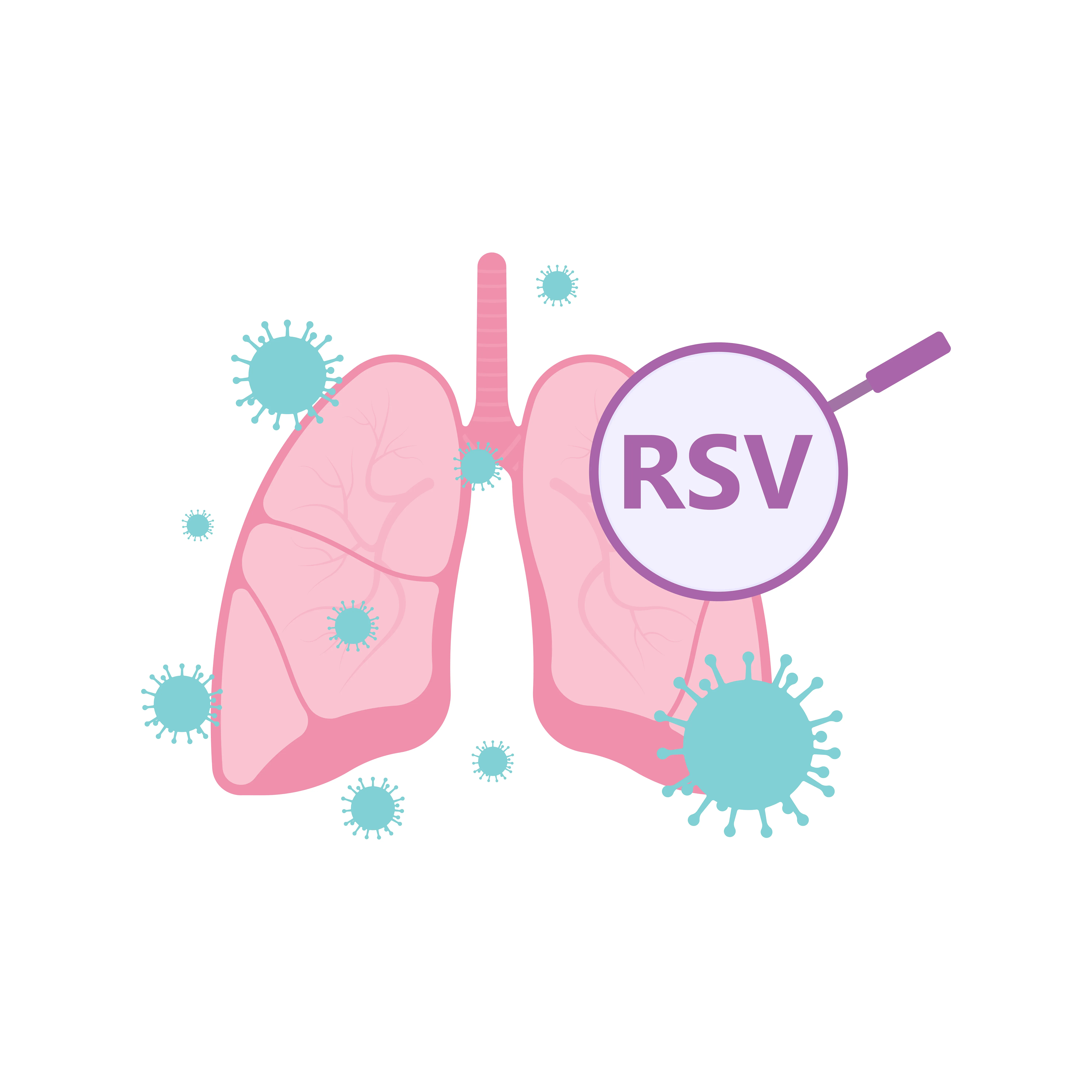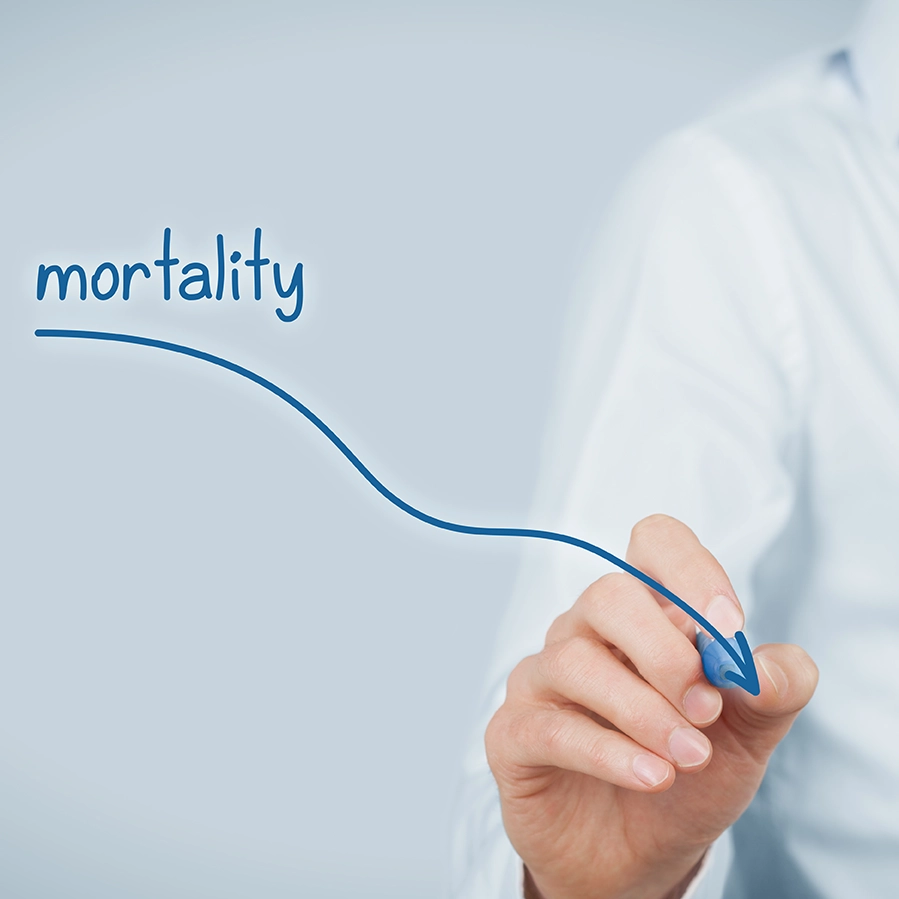Evaluation of the Demographics, Diagnosis and Monitoring, Management, Device Usage and Adherence Among COPD Patients: A Survey of Doctors in Nepal
11 Sep, 18
Introduction
- Globally estimated 384 million people are suffering from COPD with a prevalence of 11.7%.1 Current annual mortality is 3 million which might increase to 4.5 million by 2030.1
- With increasing prevalence of smoking in developing countries, and aging populations in high-income countries, the prevalence of COPD is expected to rise over the next 30 years.1
- In Nepal COPD possessed 43% of the non-communicable disease burden, and 2.56% of hospitalizations.2
- Global Initiative for Chronic Obstructive Lung Disease (GOLD) recommended the use of spirometer to evaluate the lung function of COPD patients.1
- Guideline suggested, pharmacologic treatments should be complemented by appropriate non-pharmacologic interventions for management of COPD.1
- There was a paucity of recent data to understand the practice pattern of COPD by clinicians in Nepal.
Aim
- The study aimed to evaluate doctors’ perception on demographics, diagnosis, monitoring, management, device usage and adherence among COPD patients in Nepal.
Methods
- This was a questionnaire based survey with multiple choices (Fig. 1).
- A total of 18 questions were branched out into categories of demographics, diagnosis, management, use of devices and adherence.
- Data was collected from randomly selected 171 physicians practicing obstructive airway diseases.
- The participants were from 135 different locations across 45 towns in Nepal.
- The data collection took 2 months (September and October 2017) to complete.
- All forms were hand-filled by the doctors, duly undersigned.
- The data analysis was performed by SPSS version 2.2, supported at Chest research foundation (CRF), Pune.
Figure 1: Scheme depicting the execution of the study
Results
- 81.87% doctors encountered at least 5 COPD patients in their daily practice (Fig. 2).
- Almost all patients were >40-years of age (Fig. 3).
- 47.18% COPD patients were female.
How Many Patients Do You Encounter with COPD in Your Daily Practice?
Figure 2: Number of patients with COPD encountered by doctors
The Highest Number of Your COPD Patients Belong to Which Age Band?
Figure 3: Age band for highest number of COPD patients
- 75.74% of doctors routinely used spirometry and clinical judgment to diagnose COPD (Fig. 4).
- Almost all doctors called their patients every 3 months for follow up.
- 96.43% doctors found at least 70% of their patients were smokers (Fig 5).
How Do You Routinely Diagnose COPD in Your Practice?
Figure 4: Method of diagnosing COPD patients
What Percentage of Your Patients with COPD Never Smoked?
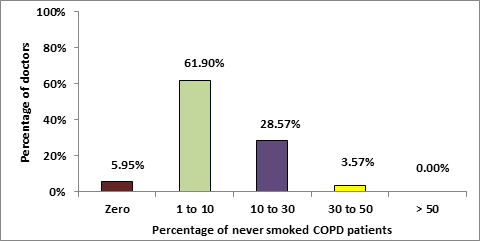
Figure 5: Percentage of never smoked COPD patients
- Symptoms of COPD was prioritized by most doctors over lung function and exacerbation history, for selecting treatment options for their patients (Fig. 6).
- Approximately, 54.74% of doctors preferred to prescribe short-acting bronchodilators to GOLD Group-A patients.
- LABA/LAMA and ICS/LABA combinations were preferred choice by 28.57% and 25.51% doctors respectively for GOLD Group-B patients.
- 53.57% and 78.18% doctors preferred LABA+LAMA/ICS combination for both GOLD Groups-C and D patients respectively.
Which of the following do you prioritize while selecting a treatment for patients with COPD?
Figure 6: Prioritization by doctors for selecting COPD treatment options
Which of The Following Non-Pharmacological Treatments Do You Routinely Offer to Your Patients with COPD?
Figure 7: Non-pharmacological treatments doctors offer to COPD patients
- Smoking cessation advised is widely offered by most doctors as a non-pharmacological treatment to COPD patients (Fig. 7).
- 40.12% of doctors prescribed inhalation therapy to each of their COPD patients.
- 46.34% doctors said they don’t prescribe spacer with pMDI.
- Only 41.57% doctors regularly checked their patient’s inhalation technique on every visit (Fig. 8).
How Often Do You/Your Assistant/Other Healthcare Professional Evaluate the Inhalation Technique of Your COPD Patients?
Figure 8: Number of times doctors/assistant evaluate inhalation technique
Of the Following Devices, Which One Do You Prefer to Prescribe to Maximum Patients with COPD?
Figure 9: Devices that doctors prefer to prescribe to maximum number of COPD patients
- 72.67% doctors preferred dry powder inhaler devices (Fig. 9).
- 85.03% doctors preferred nebulized SABA/SAMA at home for severe COPD patients.
In Your Experience, for Every 10 Patients That Visit You, How Many Show Good Adherence (>80%) to the Prescribed Inhaled Treatment?
Figure 10: Number of patients showing good adherence to prescribed inhaled treatment
In Your Opinion, What is the Biggest Reason of Non-Adherence to the COPD Treatment?
Figure 11: Biggest reason for non-adherence to COPD treatment
- Only 21.56% doctors believed that >70% of their patients had good adherence (>80%) to the treatment (Fig. 10).
- Poor technique and high cost of therapy were considered as the biggest reasons for non-adherence to COPD treatment (Fig. 11).
Conclusions
- There was a high burden of COPD among females as-well-as non-smokers in Nepal.
- Doctors were following GOLD recommendations for the treatment of COPD.
- DPIs were the most preferred device nevertheless, in the patients who were using pMDIs, the use of spacer can be increased.
- Evaluation of inhalation technique in every visit can be improved the adherence level among COPD patients.
References
- Global Initiative for Chronic Obstructive Lung Disease (GOLD) guideline, updated 2018.
- International Journal of COPD 2012:7 253–257.



